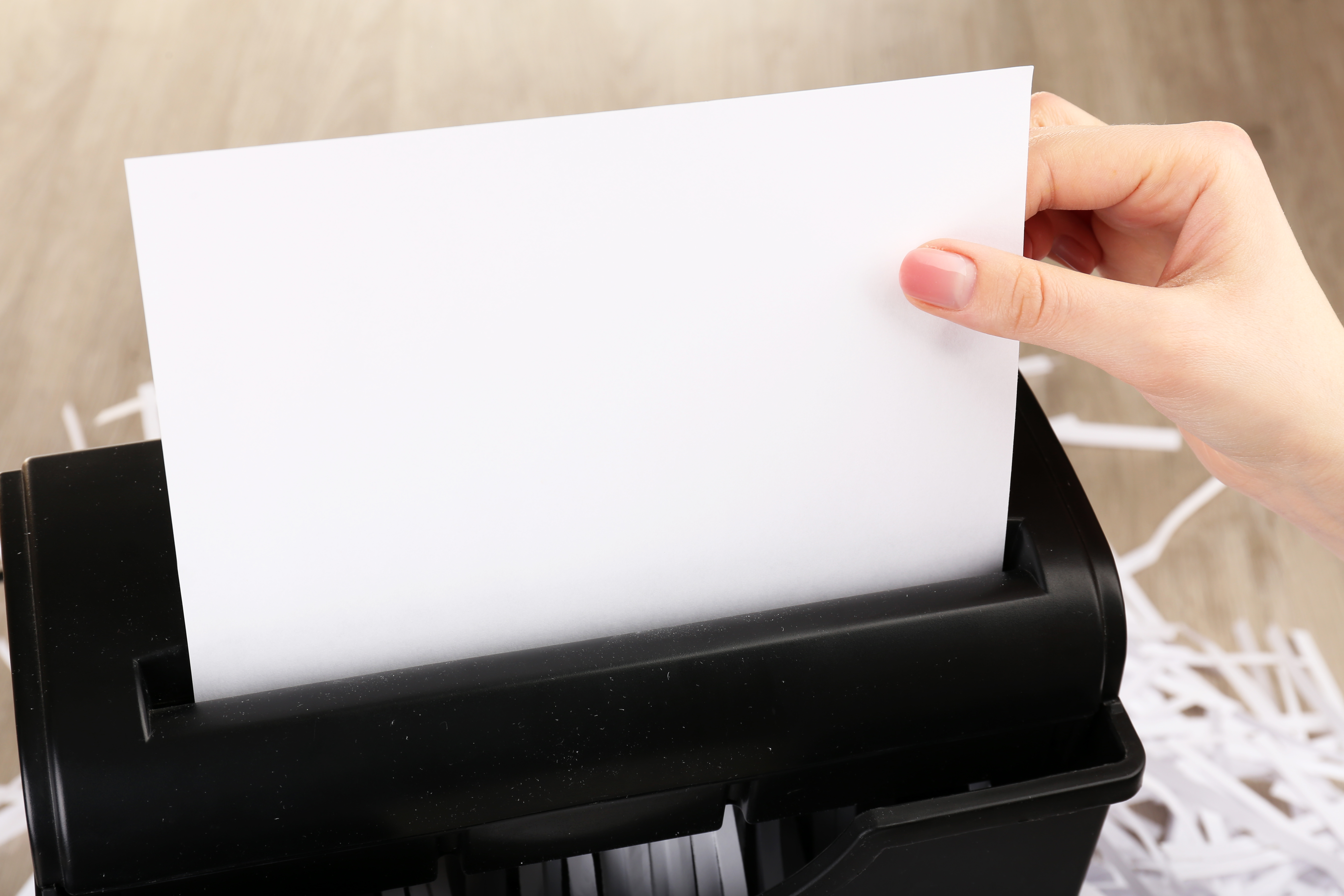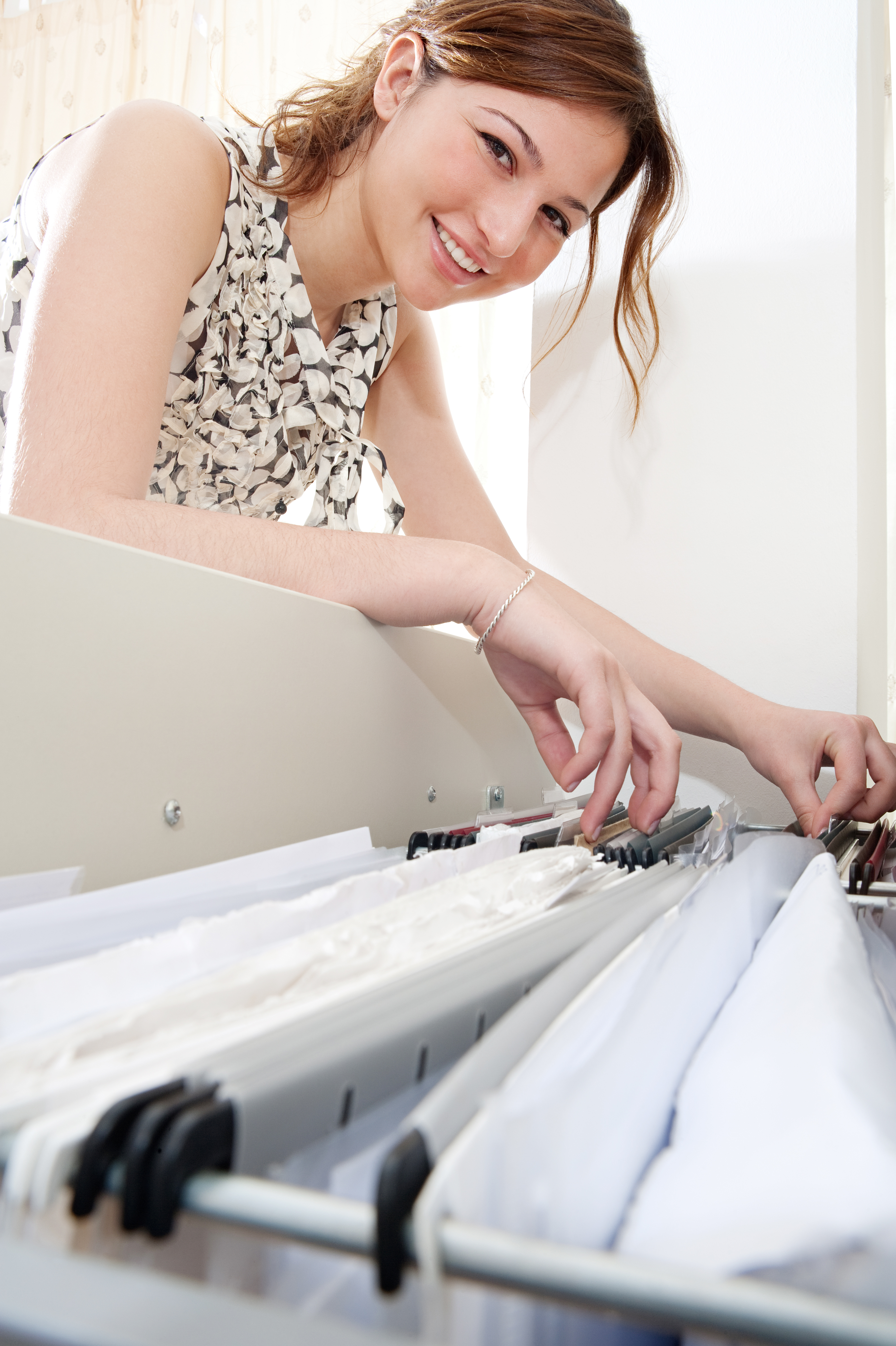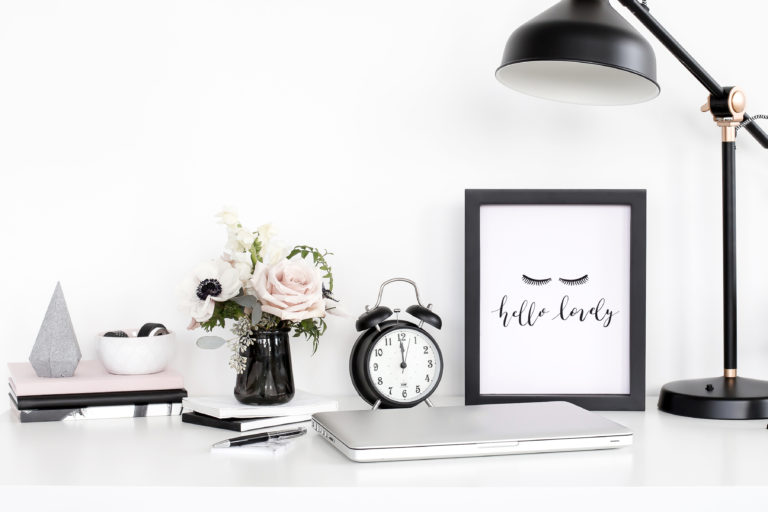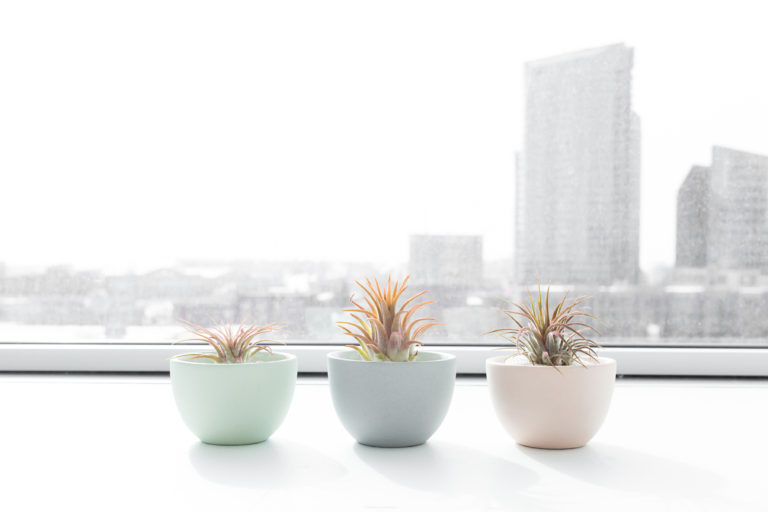Overwhelmed by Piles of Paper? How to Reduce Paper Clutter in 3 Simple Steps
Is paper taking over your home and life? It seems like we get a tree’s worth of paper coming into our house every week. Between junk mail, kids’ school papers and household records it can feel super overwhelming. Even though we manage more and more of our lives online, paper doesn’t seem to be going anywhere.
When paper gets to a certain point, it’s hard to know where to start.
If you’re ready to clear the paper piles from your kitchen counter, dining room table and desk, these steps will give you a starting point for eliminating your paper clutter for good.

Step 1: How to purge papers
The first step is purging papers you no longer need. You’re probably hanging on to a lot of paper that’s in this category. You’ll need just a few supplies for this phase: shredder, recycling bin, camera and/or scanner and computer.

Recycle/Shred paper you no longer need
First, make a big pile of the paperwork you don’t need anymore. Not sure where to look? Here are some places to start:
- Junk mail: If you’re keeping magazines or ads that you don’t need, they can be disposed of.
- Outdated documents: You can get rid of paperwork related to houses or cars you no longer own.
- Kids Papers: We get a lot of informational papers from kids’ schools. Recycle anything that relates to something that has already passed. Choose a few important tests and papers to keep, then dispose of the rest. You may have to be stealthy!
- Old financial statements: Almost all of your financial records are available online these days. An exception might be if you have closed an account but want to keep the account records.
Taking pictures or scanning documents to reduce paper clutter
There are some papers that you need to keep the information from but don’t need the physical paper. Anything informational usually falls into this category. Not sure how to differentiate? Here’s a simple breakdown.
Need the physical paper
- Forms
- Permission Slips
- Official Government & Legal Documents
- Investment certificates (stock certificates, CDs)
Don’t need the physical paper
- Informational handouts
- Flyers
- Advertisements
- Coupon Codes
You can either scan the documents or take a photo of them, depending on the type of document. Letter-sized papers can be scanned if you like, but it’s not necessary. You can take and save a picture of almost anything for later.
Make sure you come up with a way to organize your digital files! Store them in an organized way on your computer. Don’t forget to back up your files with a service like Carbonite. This is a super important step if you’re storing information and documents digitally.
Use the internet for manuals
If you’re like me, you have a million manuals at home. Unless you really need the physical manual for some reason, it’s OK to throw it away. You can access almost any appliance manual online. Feel free to confirm that you can find the manual online before throwing the physical version away!
Step 2: How can I organize my paperwork at home?

Now you’ve hopefully reduced your paper piles a bunch – by half or more! That process alone should make the organization step seem a little more manageable.
Now you’re probably wondering how to organize papers that are left! You’ll have different systems for different types of papers. These fall into a few categories.
Filing system for important papers
First, you need somewhere to file Very Important Papers. These are the papers that you need to keep hard copies of. They are important to have but you probably don’t need access to them frequently. This type of paper include important legal documents:
- Marriage certificates
- Birth certificates
- Death certificates
- Divorce Papers & Custody Agreements
- Wills, Medical Directives & Powers of Attorney
- Physical investment instruments like stock certificates and treasury bonds
- Car titles
- Business papers like articles of organization & operating agreement
In addition, there are documents that are super important but not legal documents. Here are a few that I’ve misplaced in the past:
- Airline vouchers/credits
- Membership cards
You need a safe and organized location to store these documents. Group all of this paper together to see how much you have. You probably don’t need more than two filing drawers. You’ll also need hanging files, file folders and a pen.
I usually create a hanging folder for each category, and then have a file folder for each item within the category. Here’s an example:
Hanging file: Cars
Folders: Truck, Subaru, Motorcycle
Make sure that your partner, if you have one, also understands the system so they can file and find papers too!
Create an easily accessible paper organization system for active papers
Some papers are “active” papers. These are papers that you need to take action on in some way. Examples of active paper are:
- Permission slips
- Forms
- Applications
- Bills
Active papers need to be organized but accessible in a way that helps you take action on them. This one is a little tougher! I suggest finding a pretty file folder or hanging file box to store these active papers. You’ll have to develop a system of reviewing these papers about weekly to make sure you don’t miss anything.
Papers for other people
Papers that require action from other people need a special system. If you have younger kids, you probably only need to file papers for your spouse. To do this, you can label a separate file folder for your partner and put it somewhere obvious.
For families with older kids, you might need a folder for each child. When the system gets this complicated, a small filing box is the perfect paper clutter storage solution. Create one file folder for each family member and store active papers there. Make sure that your family knows to check the file folder regularly! It’s helpful to put it somewhere obvious and create a ritual around going through the papers each week!
Step 3: How do you keep paper clutter under control?
Putting a paper organization system in place is only the first step of the paper decluttering journey. Once you have a good paper filing system, you have to come up with a way to maintain it. Like anything, a beautifully organized paper system will quickly become chaotic again if you don’t have a good way to keep up with the paper. Accept that this is how it is. You’re not doing anything wrong – it’s just that paper is always coming in so you have to be consistent in how you deal with it.
Review immediately and put into file/active/recycle
The best way to keep paper under control is by reviewing it immediately as it comes in. If you put it in a pile to “get to later” you will rarely get to it later. Try to deal with anything that comes in by the end of the day.
Decide quickly whether the paper is active, important but not active or unneeded. Immediately file the papers you’re keeping in the proper places. Shred (if needed) and recycle anything that you don’t need to keep. It’s much easier and faster to deal with one day’s worth of paper than a big pile of it!
Reduce incoming paper by unsubscribing to ads/junk mail
You can also reduce the amount of paper you have incoming. You can also remove yourself from catalog and junk email lists. Use the PaperKarma app to unsubscribe. Simply snap a photo of your unwanted mail and press “unsubscribe”. You’ll be removed from the mailing list if possible!
If you do most of your shopping online, you don’t need to receive paper catalogs. Save some trees by unsubscribing from as many lists as possible !
Make your accounts paperless!
Select paperless billing for as many accounts as you can. Many companies are encouraging customers to select paperless billing since it saves paper and postage for the company as well! This is a great way to eliminate paper bills and account statements.
Use a Rocketbook, reusable notebook or electronic method for note-taking
For people who take a lot of notes, paper notes and notebooks can really accumulate quickly! Not only do paper notes pile up over time, but they’re also often difficult to organize and access. Enter a reusable notebook!
I personally have two Rocketbooks and I LOVE using them for notes. There are a few huge benefits for me:
#1 I only have to carry around ONE notebook
#2 I don’t have a bunch of old paper notebooks cluttering my house and office
#3 I can easily organize the notes digitally and access them at any time
The benefits of a reusable notebook go far beyond reducing paper clutter – but that’s a great bonus!
Review & address active paper weekly
Designate a day to review and deal with all of the active paper. The turnaround time is usually long enough that papers, forms and invitations can hold for a week. (If it’s urgent, just handle it immediately.)
Some people choose Sunday to review active papers, but I prefer Monday when I’m at my desk. Find an hour or two that works in your schedule, is quiet and is a time when you have all of the materials you need.
Get a special drink to motivate yourself! This is note the time to power through. Try to make this habit as pleasant as possible so you will be likely to keep it up.
Review filed & active paper quarterly, address as needed
Once a quarter, review the paper you’ve filed. Is there anything that’s no longer relevant, for a car that you’ve sold or a house that you’ve moved out of?
Go through the active paper file, too. Is there anything that’s been hanging around in the “active” file week after week? It might not be so active.
Shred and recycle any documents you don’t need anymore. Take photos and dispose of documents that have information you need, but you don’t actually need the paper copy. Re-file any remaining documents if needed.

You can eliminate paper clutter FOR GOOD!
The good news is that you don’t have to continue to be overwhelmed by paper clutter! You can declutter paper and stay on top of it with just two things: solid paper clutter organization ideas and a paper administration routine. Clothes get dirty, houses get messy and paper accumulates. By reducing the amount of paper that comes in and developing systems to organize your paper, you’ll be free from the overwhelming mountains of paper clutter for good.






Hi,
I am a very organized person. My problem is that I find so much of what I read in newspapers and magazines compellingly interesting and I end up with piles of “clippings” that I file and end up probably not even remembering that they are there. Do you have any thoughts or suggestions about how to keep myself from saving so much paper information?!! Thank you.
Oooh yes! I hate paper. 🙂 Can you try taking a picture of the clippings or scanning them? Then you can organize them in Google Drive or Evernote so you can find them again. Create folders/notebooks for things like Politics, Recipes, Holidays, etc. That way you know where to look.